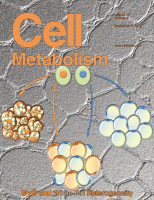Understanding how metabolic and signaling pathways impact adipose tissue distribution and function
Decades of clinical data show that the key factor that explains the negative roles of excessive adipose tissue in whole body homeostasis is not the total amount of adipose tissue, but rather its distribution. However, how fat distribution is mechanistically determined is not clear. We recently found that differences in the activation of the PI3K/Akt signaling pathway between adipocyte lineages dramatically affects adipose tissue distribution and function. This opens a new and exciting model in the field in which natural differences in signaling and/or metabolism between adipocytes lineages may be one of the key factors regulating adipose tissue distribution.
We are pursuing efforts to understand the biology of distinct sub-pool of progenitor cells and the main signaling and transcriptional pathways that differentially regulate them to mechanistically understand fat distribution.




